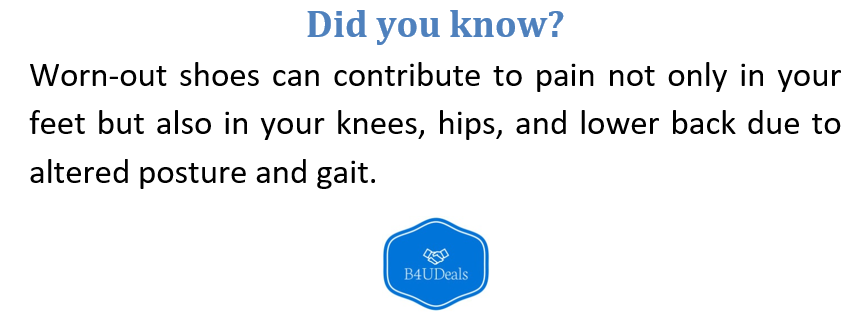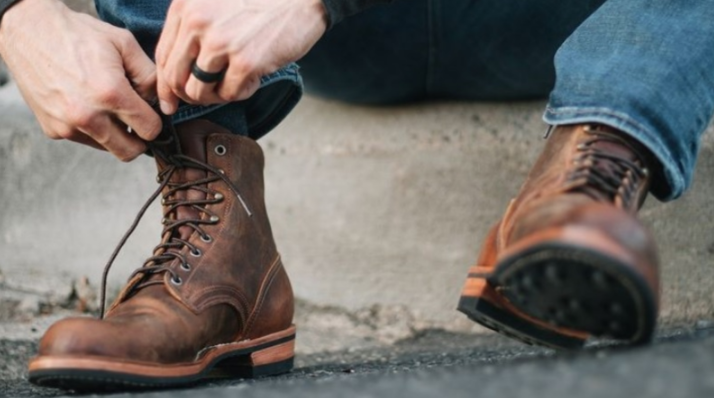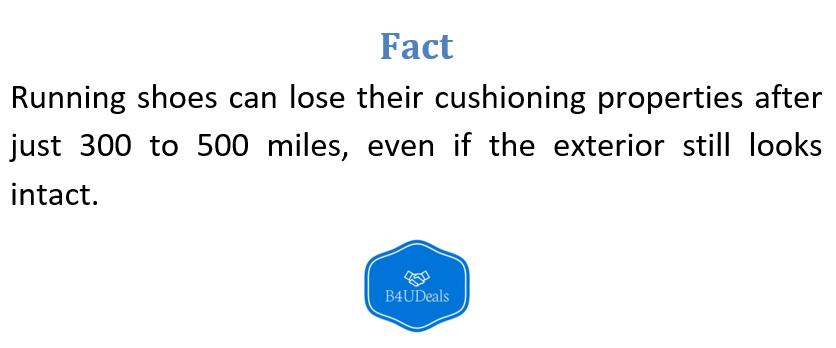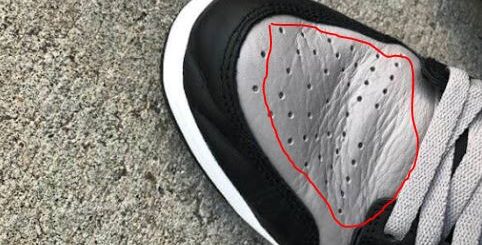Knowing When to Replace Your Footwear: A Guide to Comfort, Health, and Prevention
As temperatures dip and winter sets in, many people instinctively switch from light, breathable shoes to more insulated footwear. But beyond seasonal necessity, this change prompts a deeper question: how often should we really replace our shoes? More importantly, what are the hidden consequences of wearing shoes past their prime?
Many people wait until shoes are visibly falling apart before considering a new pair. However, this approach overlooks the subtle signs of wear that can lead to discomfort, injury, and even long-term damage to the body. Let’s explore the science and practicality behind footwear lifespan, how to identify signs of deterioration, and what alternatives or enhancements can prolong both the life of your shoes and the health of your feet.

The Lifecycle of a Pair of Shoes
Footwear, like all frequently used tools, has a shelf life. Yet unlike car tires or toothbrushes, most people do not consider shoes as items that require periodic replacement. However, footwear manufacturers and podiatrists alike warn that shoes endure an immense amount of stress, especially if worn daily.
According to Dr. Miguel Cunha, founder of Gotham Footcare and a respected podiatrist in New York, everyday walking shoes should typically be replaced every 8 to 12 months, depending on usage and activity level. For runners and athletes, this window may be even shorter. Studies from the American Academy of Podiatric Sports Medicine (AAPSM) suggest that running shoes often lose shock-absorption properties after 300 to 500 miles (approximately 480 to 800 kilometers), which could equate to as little as six months for some.
This degradation is not always visible. The breakdown of midsoles—the cushioned layer between the inner and outer sole—often occurs subtly. You may still see a clean upper and an intact tread while the shoe is failing structurally inside.

Signs That It’s Time to Say Goodbye
Recognizing when shoes need to be replaced isn’t always as simple as spotting a tear. Here are the less obvious indicators that your footwear might be doing more harm than good:
1. Loss of Cushioning and Support
Over time, the foam and gel materials used in shoe construction compress and lose their resiliency. As cushioning breaks down, it compromises shock absorption, leaving your joints and soft tissues to take the brunt of impact. You might notice increased fatigue in your legs, knees, or lower back, often misattributing it to age or poor sleep, rather than your shoes.
2. Uneven Wear Patterns
If the tread or outer sole shows uneven wear—more on one side of the heel or forefoot—this is a red flag. Not only does it indicate degradation, but it could also suggest an imbalanced gait, which may worsen over time.
3. Creased or Compressed Midsoles
Look closely at the area between the sole and upper. If there are deep creases or compressed sections, your midsole has likely collapsed. This diminishes the shoe’s ability to distribute pressure evenly across the foot.
4. Structural Changes
Shoes that tilt inward or outward when placed on a flat surface have lost structural integrity. They may no longer provide proper arch support or heel stabilization—critical elements for posture and joint alignment.
5. Physical Discomfort or New Pain
Perhaps the most telling sign: your body starts to protest. If you experience new aches in your heels, arches, knees, or hips, your shoes could be the culprit. Conditions like plantar fasciitis, shin splints, or lower back pain often emerge or worsen when support diminishes.
Shoe Types with the Shortest Lifespans
While all footwear wears out eventually, some styles degrade faster than others—especially those used under physically demanding conditions.
Athletic and Running Shoes
Running shoes absorb two to three times the body’s weight with each footstrike. That’s a massive load, especially for those clocking in 20–30 miles weekly. Most experts recommend replacing these every 300 to 500 miles, which, for casual runners, is about every 6–9 months.
Cross-training or court shoes used for high-impact sports like basketball, tennis, or HIIT workouts have similar lifespans, though they degrade differently due to lateral movements.
Work Boots
Construction, warehouse, and farm workers often spend 8 to 12 hours per day in heavy-duty boots. If these boots aren’t replaced annually or when foot fatigue starts creeping in, long-term musculoskeletal problems can follow. Damage to the steel toe cap, worn insoles, and degraded arch support can increase the risk of both chronic injuries and workplace accidents.

High Heels
Though not used for sports, heels are notorious for their lack of ergonomic design. When their heel tips wear down or the arch begins to collapse, balance suffers. Worn-out heels can cause ankle sprains, metatarsal pain, or tendonitis. Regularly rotating heel heights and resoling well-loved pairs can help delay replacement.
The Hidden Costs of Wearing Worn Shoes
Shoes play a central role in maintaining posture and biomechanical alignment. Their primary job isn’t just fashion or surface protection—it’s about stabilizing the body and reducing impact as we move.
Poor Gait Mechanics
Degraded soles alter your natural walking pattern. Subconsciously, the body compensates, leading to misalignment in hips, knees, and ankles. Over time, this can cause joint stress and muscular imbalance.
Injury Risk
Lack of support can increase the chances of foot fatigue, stress fractures, ankle sprains, and Achilles tendon strain. According to a study published in the British Journal of Sports Medicine, improper footwear contributes to nearly 40% of running-related injuries.

Posture Problems
Your feet are the foundation of your posture. If they’re unstable, everything above them—from the spine to the neck—can be thrown out of balance. Chronic discomfort, headaches, and even breathing issues can stem from long-term postural misalignment.
Prolonging the Life of Your Shoes
Not everyone can afford or justify replacing shoes frequently. Luckily, there are smart ways to extend the lifespan of your footwear without sacrificing health or comfort.
1. Rotate Between Pairs
One of the simplest strategies is to avoid wearing the same pair every day. Allowing shoes to “rest” for at least 24 hours gives the cushioning time to decompress and air out.
2. Use Orthotic Inserts
Inserts can restore lost support and make older shoes feel more stable. Brands like Superfeet, OrthoSole, and Powerstep offer insoles with customized arch support, metatarsal pads, and shock absorption properties. These additions help distribute pressure more evenly, especially for those with flat feet or high arches.
OrthoSole, for example, offers adjustable insoles with interchangeable pads for different arch types. Studies published in the Journal of Foot and Ankle Research suggest orthotic inserts reduce foot pain and improve balance in both athletic and elderly populations.
3. Clean and Maintain
Keep your shoes in good condition by brushing off dirt, using water-repellent sprays, and replacing laces and insoles regularly. For leather or suede, conditioning treatments can prevent cracking.
4. Store Shoes Properly
Don’t leave shoes in damp, cramped environments. Use shoe trees for leather styles and store athletic shoes in a dry, ventilated area. Heat and moisture accelerate material breakdown.
When Repair is a Smart Option
Sometimes a shoe isn’t completely beyond redemption. Cobblers and repair shops can resole leather boots, replace heel tips, and even add structural support to certain shoes. If you’ve invested in a high-quality pair, resoling may cost a fraction of buying new ones and maintain your comfort level.
However, don’t rely on aesthetics alone. A freshly polished upper doesn’t mean the midsole or internal shank is still functioning properly. Know when repair is viable and when replacement is safer.
Alternative Solutions: When You’re Not Ready to Let Go
Shoe replacements aren’t always feasible—be it due to financial constraints, sentimental value, or limited availability. In such cases, smart supplementation can offer a temporary reprieve.
Orthotic insoles, as mentioned earlier, are among the most effective ways to enhance shoe function. Unlike over-the-counter gel inserts, medical-grade orthotics address underlying foot mechanics. They can correct overpronation, bolster arch support, and redistribute pressure, allowing older shoes to provide continued comfort and function.
Foam heel cups or metatarsal pads can also reduce hot spots and soreness. Arch sleeves, toe spacers, and compression socks can aid circulation and provide added stability—particularly useful for older adults or people with foot conditions like bunions or arthritis.
Final Thoughts: Listen to Your Feet
Footwear isn’t just about appearance—it’s an essential component of physical well-being. Regularly evaluating the condition of your shoes helps prevent injuries, preserves posture, and contributes to daily comfort. The rule of thumb? If your body feels different after a long day—more sore, fatigued, or imbalanced—your shoes may be the reason.
By learning to recognize the signs of wear and incorporating tools like orthotic insoles or rotational use, you can extend the life of your shoes and, more importantly, protect your body from unnecessary strain. So the next time you reach for your favorite pair, ask yourself: are these shoes still walking with me, or holding me back?
Frequently Asked Questions
How often should everyday shoes be replaced?
Everyday shoes should typically be replaced every 8 to 12 months, or sooner if they show signs of wear such as reduced support, visible damage, or discomfort during use.
What are the early signs that shoes are worn out?
Subtle signs include compressed midsoles, uneven tread wear, loss of cushioning, structural leaning, and foot discomfort like aches or new pain in joints or muscles.
Which types of footwear wear out fastest?
Running shoes, work boots, and high heels tend to wear out more quickly due to the physical strain they endure. Running shoes, for instance, often lose effectiveness after 300–500 miles.
What are the risks of continuing to wear worn-out shoes?
Wearing deteriorated shoes can lead to poor posture, unbalanced gait, chronic pain, foot conditions like plantar fasciitis, and increased risk of injury due to reduced shock absorption.
How can you extend the life of your shoes?
You can prolong shoe lifespan by rotating between pairs, using quality orthotic inserts, cleaning and storing them properly, and repairing them when feasible.
Are orthotic insoles a good alternative to replacing shoes?
Yes, orthotic insoles can improve support, enhance comfort, reduce foot fatigue, and provide a cost-effective solution when you’re not ready to replace your shoes.







